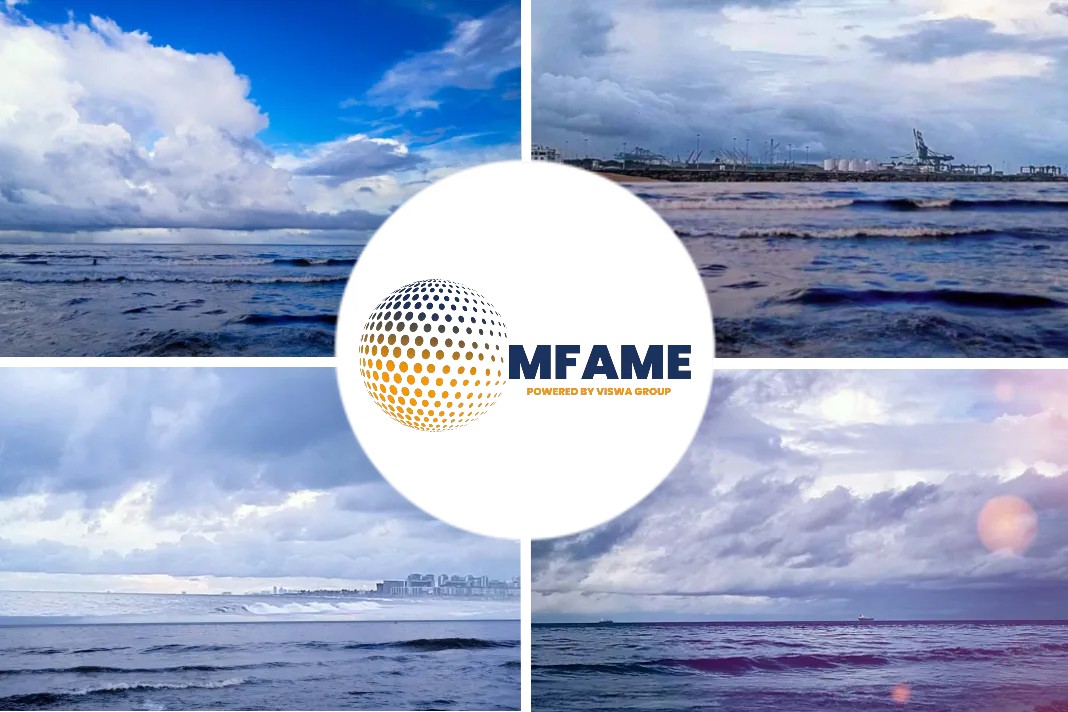An abrupt wall of water as tall as a 10-story building emerged from the storm as reported by SMH.
Gigantic waves
On deck, explorer Jules Dumont d’Urville estimated the wave loomed at least 30 metres high – and it was bearing down on his ship the Astrolabe fast.
Somehow, they made it back to shore, losing just one man on that dangerous crossing of the Indian Ocean in 1826.
For centuries, ships’ disappearances at sea were blamed on pirates or misadventure, and stories of giant waves were dismissed as readily as legends of sea monsters.
Then in 1995, a sensor on a Norwegian oil rig captured proof of what Dumont d’Urville had faced: a wave 26 metres tall, more than twice the size of any recorded in the area in the hours before – taller even than the hypothetical waves scientists then believed could only happen once every 10,000 years.
That same year, when the ocean liner Queen Elizabeth 2 was struck by a 27-metre tall wave en route from the UK to New York, scientists had to admit something else: these so-called rogue waves aren’t just possible, they happen relatively frequently.
And are we getting any better at predicting (and outlasting) them?
What are rogue waves?
Today, the monster wave of sailors’ nightmares has a formal scientific definition: a rogue wave is at least twice as high as recent waves around it.
It can rise and disappear quickly out of a stormy sea, but it can come out of nowhere too – in calm waters.
ANU theoretical physicist Professor Nail Akhmediev, who has been working to predict rogue waves through equations, says survivors will sometimes describe otherwise good sailing weather, “clear skies” before the monster wave appears.
Such phenomena can even swallow rescue helicopters as they swing down to the water.
From the bridge, he managed to photograph it (below) – snapping some of the world’s few images of a rogue wave.
“I’ve seen some big, big waves,” he says.
Rogue waves are not tsunamis – those waves are triggered by a large displacement of water due to an event such as an earthquake, volcanic eruption or landslide.
Rogue waves, meanwhile, are generally thought of as those at the surface, although Akhmediev says there are also giant, unexpected waves deep below, sometimes called rogue internal waves.
That wave may have been up to 100 metres tall.
“They found the sub split into three parts on the bottom of the sea but it hadn’t been attacked by anything or anyone.”
At the time, the agency said rogue waves were likely to have sunk most of the 200 supertankers and container ships over 200 metres long that had gone down in severe weather over the previous two decades.
How do rogue waves form?
If weather forecasting is complicated, oceans are an even more complex beast, Akhmediev says.
The wind whips up waves, driving them across the seas for thousands of kilometres.
“And we know waves don’t act in a nice linear way,” where the size of a rogue is in perfect proportion to the waves it came out of, says Akhmediev.
“All particles act like waves, after all, even on a subatomic level,” he says.
“And sometimes it can grow”, leeching out from other surrounding waves and “concentrating into a single rogue”.
In 2012, he and German scientists tested their own solution in the lab – with one unfortunate Lego pirate, whose ship they capsized by generating a freak wave in otherwise calm waters.
(“Our pirate survived it though, he now lives on my desk,” Akhmediev laughs.) The experiment revealed that rogue waves can be even bigger than previously thought, more than five times the size of others around them in a phenomenon they dubbed “super rogue waves”.
How do you survive a rogue wave?
Captains suddenly confronted with a rogue have few good choices, says van Duyn, who is now a maritime expert.
“Sometimes when ships disappear, they’re found completely broken in two,” says van Duyn.
It doesn’t happen as often now, luckily, as we build ships better.
Today, the global fleet is far larger but losses have been more than halved as ship design improves.
But experts, including Akhmediev, warn that ships are still not built to withstand the force of rogue waves – many, many metric tonnes more than standard waves.
I’ve lost steering before on a ship, and we couldn’t keep it head-on to the wave.
Are we getting better at predicting rogue waves?
Even though scientists are still debating the (likely multiple) causes of rogue waves, they are already trying to predict them.
“We’re really at the beginning of that now,” says Akhmediev.
In the US, the National Oceanic and Atmospheric Administration (NOAA) is working on an hourly forecast for potentially hazardous ocean conditions called WAVEWATCH III.
Other mathematicians argue for calculating and then charting the most efficient way rogues can form, to factor in both the linear and nonlinear theories.
Trials of this approach in wave tanks have been fairly accurate, though lab conditions are never the real-world chaos sailors encounter.
On the high seas, conditions can shift minute to minute, let alone hour to hour.
Whatever the algorithm, the trick is making predictions fast enough to be of use to ships.
On the high seas, conditions can shift minute to minute, let alone hour to hour.
Akhmediev points again to the example of street traffic.
It might be fairly easy to measure a car’s speed and distance already travelled, but to predict exactly where that car will be in an hour’s time, factoring in traffic lights, other cars, weather and more, he says, is “very tricky maths indeed”.
But a lot of it will still come down to good seafaring.
“And hope, when you see it, you get the chance to grab the wheel.”
Did you subscribe to our newsletter?
It’s free! Click here to subscribe!
Source: SMH























